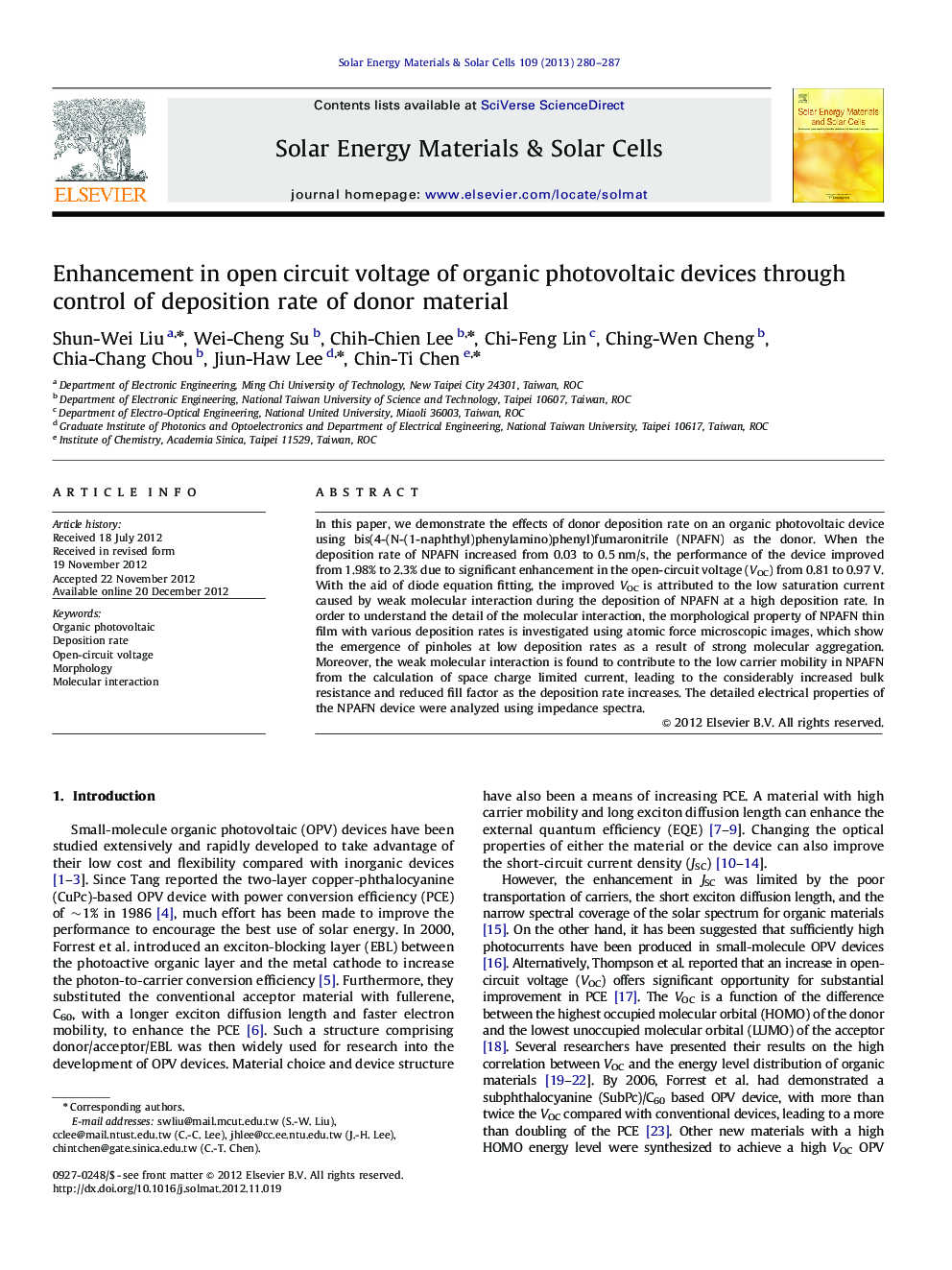| Article ID | Journal | Published Year | Pages | File Type |
|---|---|---|---|---|
| 78446 | Solar Energy Materials and Solar Cells | 2013 | 8 Pages |
In this paper, we demonstrate the effects of donor deposition rate on an organic photovoltaic device using bis(4-(N-(1-naphthyl)phenylamino)phenyl)fumaronitrile (NPAFN) as the donor. When the deposition rate of NPAFN increased from 0.03 to 0.5 nm/s, the performance of the device improved from 1.98% to 2.3% due to significant enhancement in the open-circuit voltage (VOC) from 0.81 to 0.97 V. With the aid of diode equation fitting, the improved VOC is attributed to the low saturation current caused by weak molecular interaction during the deposition of NPAFN at a high deposition rate. In order to understand the detail of the molecular interaction, the morphological property of NPAFN thin film with various deposition rates is investigated using atomic force microscopic images, which show the emergence of pinholes at low deposition rates as a result of strong molecular aggregation. Moreover, the weak molecular interaction is found to contribute to the low carrier mobility in NPAFN from the calculation of space charge limited current, leading to the considerably increased bulk resistance and reduced fill factor as the deposition rate increases. The detailed electrical properties of the NPAFN device were analyzed using impedance spectra.
► Improving the device performance by controlling the deposition rate of donor. ► Increasing the open-circuit voltage by reducing the donor molecular interaction. ► Tuning the open-circuit voltage while maintaining the same interface gap.
